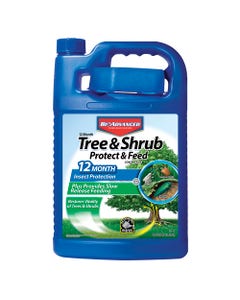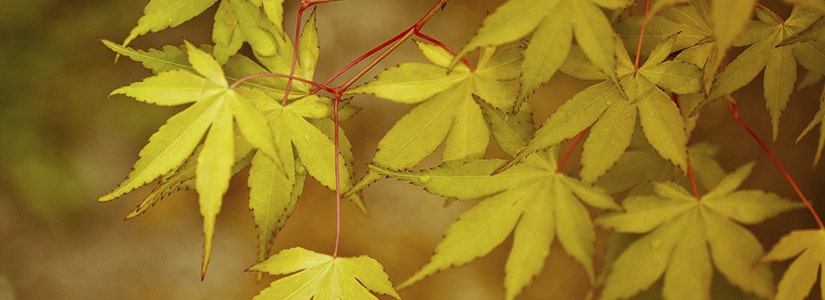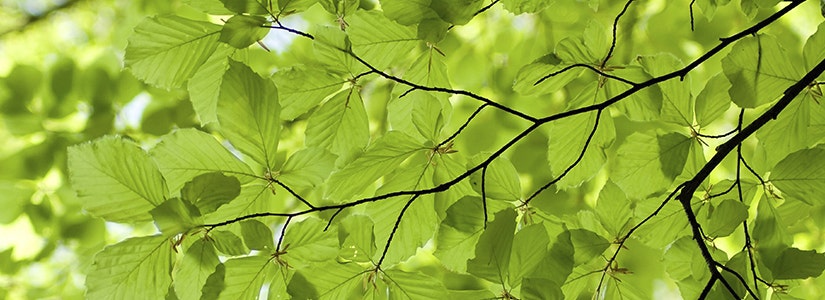

- Home
- Solution Center
- Learn
- Learn: Tree & Shrub
- The Benefits Of Planting Trees
The Benefits Of Planting Trees
Trees are an invaluable part of any landscape. The USDA Forest Service has compiled proof points to reinforce the planting and preservation of trees. Check out these amazing benefits.
Economic Contributions
Landscaping, especially with trees, can significantly increase property values and curb appeal to a home. According to the Arbor Day Foundation, trees can increase property values by as much as 15%. And according to The Council of Tree and Landscape Appraisers, a mature tree can often have an appraised value of between $1,000 and $10,000. For example: A value of 9% ($15,000) was determined in a U.S. Tax Court case for the loss of a large black oak on a property valued at $164,500.
Shoppers in well-landscaped business districts are willing to pay more for parking and up to 12% more for goods and services. Amenity and comfort ratings were about 80% higher for a tree-lined sidewalk compared with those for a non-shaded street.
Annual benefits provided by parking lot trees in Sacramento, California, (8.1% tree shade) were valued at approximately $700,000 for improved air quality. By increasing shade to 50% in all parking lots in Sacramento, the annual benefits will increase to $4 million.
In Davis, California – parking lot trees reduced asphalt temperatures by as much as 36ºF, and car interior temperatures by over 47ºF.
Plus trees in urban parks and recreation areas are estimated to improve outdoor leisure and recreation experiences in the United States by $2 billion per year.
Energy Savings
As few as three trees properly positioned can save the average household between $100 and $250 annually in energy costs. Shade from two large trees on the west side of a house and one on the east side can save up to 30% of a typical residence’s annual air conditioning costs. The net cooling effect of a young, healthy tree is equivalent to 10 room-size air conditioners operating 20 hours a day. Trees properly placed around buildings as windbreaks can save up to 25% on winter heating costs.
In fact, rows of trees reduce wind-speed by up to about 85%, with maximum reductions increasing in proportion to visual density. Because even a single row of dense conifers can cause large reductions in wind-speed, effective windbreaks can be planted on relatively small house lots.
Did you know?
Fifty million shade trees planted in strategic, energy-saving locations could eliminate the need for seven 100-megawatt power plants.
Environmental Contributions
Trees reduce runoff and erosion from storms by about 7% and reduce the need for erosion control structures. Leafy tree canopies catch precipitation before it reaches the ground, allowing some of it to gently drip and the rest to evaporate, recharging the ground water supply. Plus trees also lessen the force the transportation of sediment and chemicals into streams. Research indicates that 100 mature tree crowns intercept about 100,000 gallons of rainfall per year, reducing runoff and providing cleaner water.
A typical community forest of 10,000 trees will retain approximately 10 million gallons of rainwater per year. It also provides safe shelter, food and nesting opportunities for wildlife.
Trees also reduce noise pollution by absorbing sounds. A belt of trees 98 feet wide and 49 feet tall can reduce highway noise by 6-10 decibels.
According to Ecology.com, trees are able to remove both gaseous pollutants and airborne particles. Gaseous pollutants absorbed by the leaves include ozone, sulfur dioxide, nitrogen dioxide and carbon monoxide. Airborne particles such as dust and smoke are temporarily removed from the air by mechanical interception, primarily on leaf surfaces.
In Philadelphia – 2.1 million trees currently store approximately 481,000 metric tons of carbon with an estimated value of $9.8 million.
Social Contributions
Trees give our towns and neighborhoods a sense of place and well-being. They add serenity and a feeling of peacefulness, reducing the stress response of both body and mind when stressors of urban conditions are present. "In laboratory research, visual exposure to settings with trees has produced significant recovery from stress within five minutes, as indicated by changes in blood pressure and muscle tension." Dr. Roger S. Ulrich, Texas A&M University.
Here are two additional examples:
Desk workers with and without views of nature were surveyed. When asked about 11 different ailments, those without views of nature claimed 23% more incidence of illness in the prior 6 months.
Hospital patients recovering from surgery who had a view of a grove of trees through their windows required fewer pain relievers, experienced fewer complications, and left the hospital sooner than similar patients who had a view of a brick wall.
And the final benefit that comes from planting trees? It makes a statement that you believe in the future. Happy planting!















